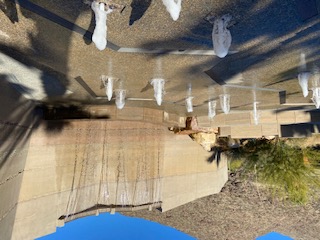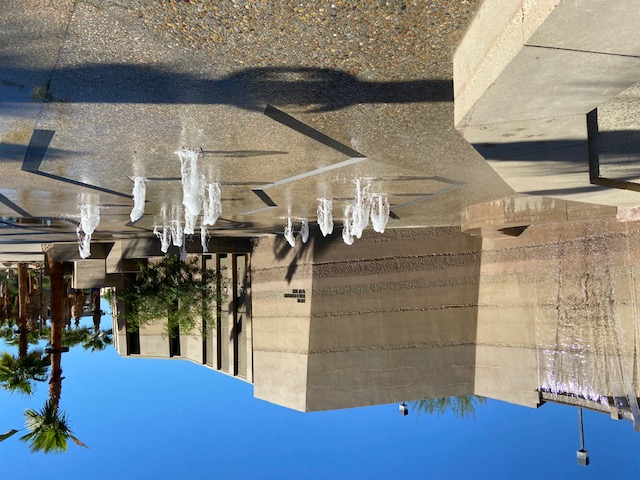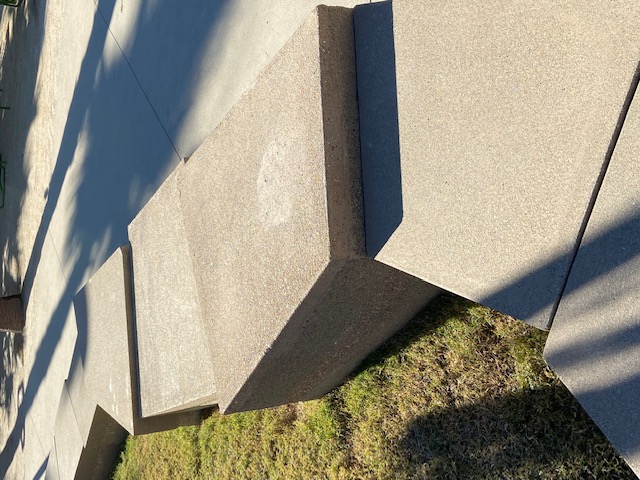Desert Dazzle
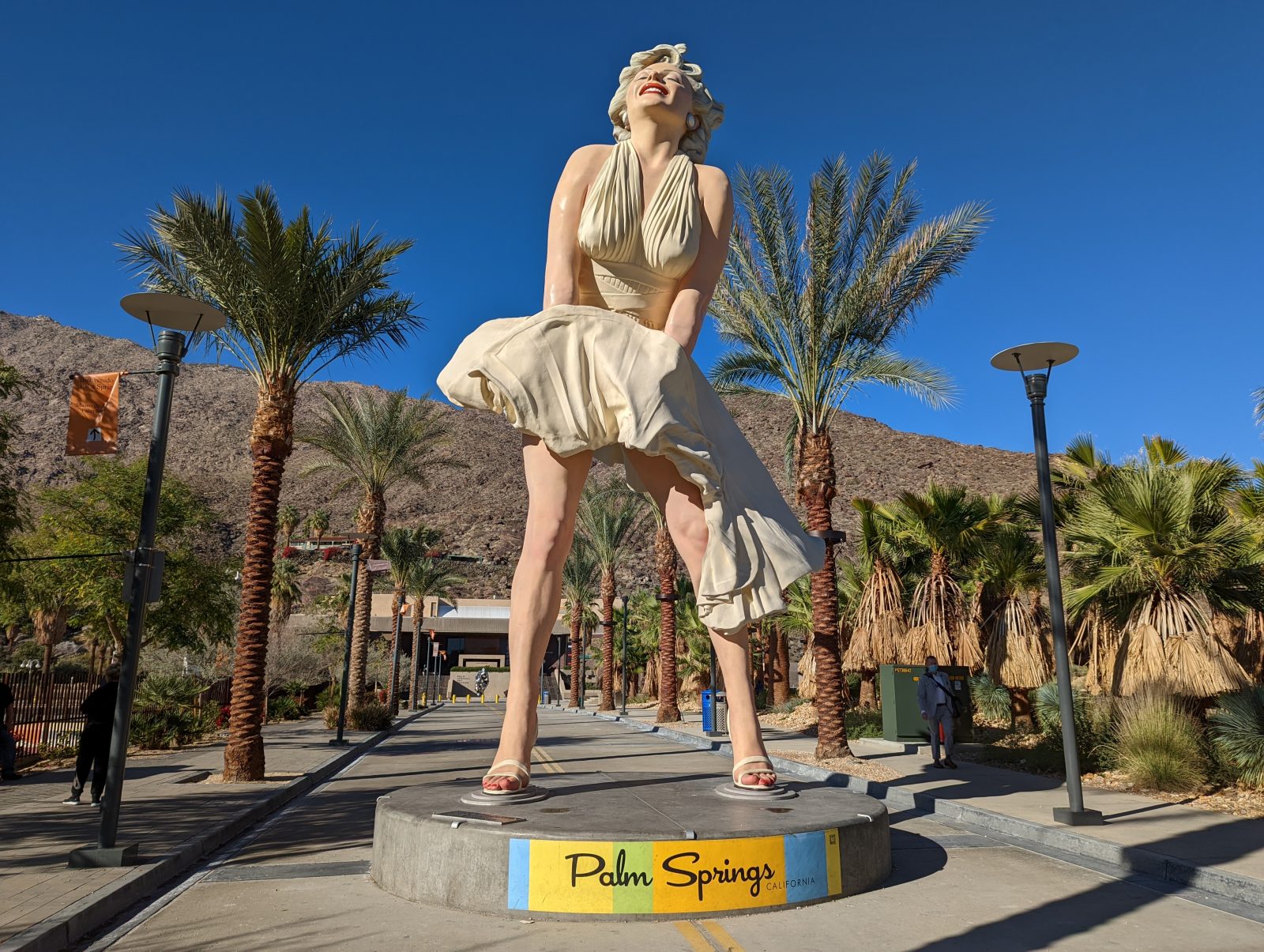
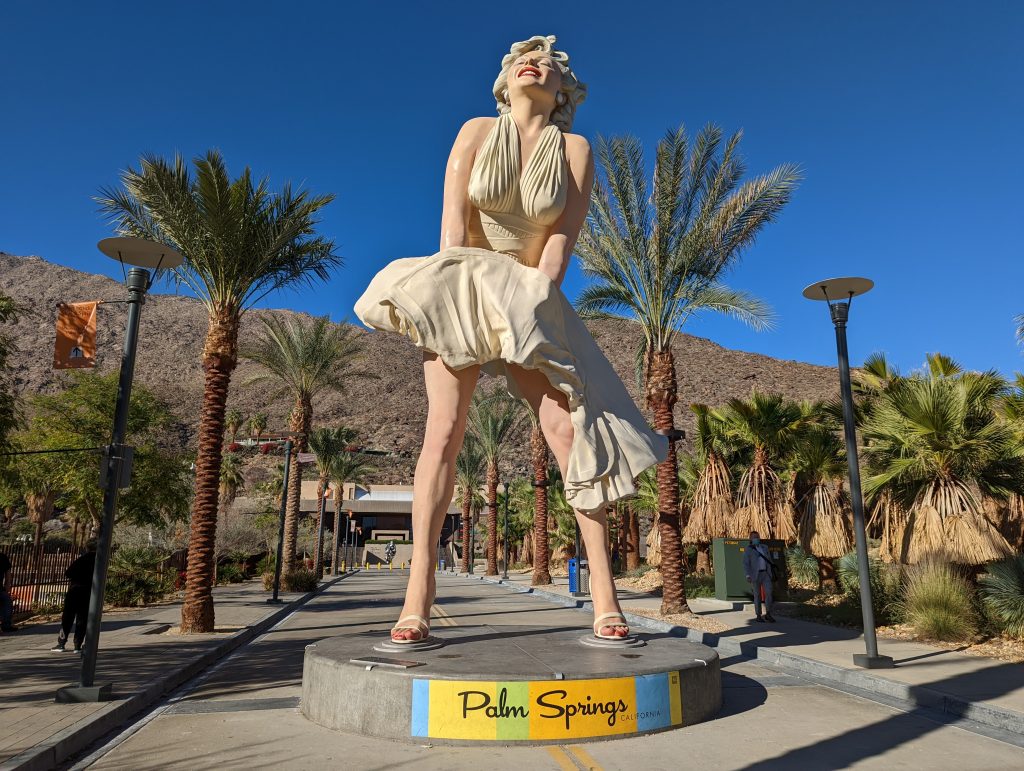
Marilyn Monroe’s legacy has a new home in a plaza directly adjacent the recently dedicated Downtown Park in Palm Springs, Calif. It’s a beautiful park with an ingenious design that blends modernism of the fabled resort city, while harmonizing with the desert environment. It also features a truly beautiful and inventive watershape.
By Eric Herman
Local residents of Palm Springs have declared the city’s new Downtown Park a triumph. The 1.5-acre park is located adjacent to the Palm Springs Art Museum and an expansive public plaza that is the new home for the controversial and iconic statue of Marilyn Monroe, a saga unto itself, along with several other important works of public art, including a daring watershape with a beautiful waterfall and leaping jet feature.
Designed by architect and landscape architect, Los Angeles-based Mark Rios, who was recommended to the city by the museum, the park was dedicated on October 21, 2021. It was the culmination of more than five years of development and no small measure of political will and community involvement.
The park contains a watershape and surrounding hardscape and softscape inspired by the nearby Tahquitz Canyon waterfall, on reservation land of the Aqua Caliente Cahuilla tribe. The waterfall is part of a stream system in the surrounding San Jacinto Mountains that creates a genuine desert oasis, which native peoples and residents of the Coachella Valley have been enjoying for centuries.
Its sheer three-sided waterfall fall is broken into thin sheets, much like the Tahquitz falls, giving shape to the water that simultaneously links nature, while also expressing the shape of the surrounding architecture. A concrete wall fans out to either side with a striated texture that also embraces the stark local geological formations.
There are few horizontal right-angles in the hardscape, softening the lines that both blend with the profile of the mountains, while also looking like the it all belongs in the city, with all of its famouslymid-century modern architecture.
In the falls’ foreground, a splash pad with 17 programmable jets and a fog-system slot that forms an artistic pattern in the exposed-aggregate pad surface – all of which is beautifully lit with programmable lights, creating an amazing intimate space day or night. With scorching triple-digit temperatures in the summer and warm temps year-round, the feature with its plumes and atomized water cooling the air becomes a place of almost poetic respite and a hive of activity.
The space is surrounded by benches, paths and shade structures, which are also inspired by the forms of the desert, but are rendered in distinctly geometric forms that give entire park its contemporary look.
The concrete benches and path surfaces, sweep through the park leading visitors to different areas, which are only a few steps away, making the relatively compact space feel much larger. The benches are made of concrete blocks of varying heights and shapes, and continue the decorative motif on the waterfall hardscape.
Moving away from the “spring” a lush grove of Washingtonian Palms, which despite the name are indigenous to the region, is immediately adjacent to the “Forever Marylin Plaza”. The planted areas also feature numerous species from the desert with a focus on those found in the oasis areas in the lower levels of the mountains.
The southwest quarter of the park is home to a surprisingly spacious event lawn and amphitheater, a site for public gatherings of all types, with a particular focus on the arts. In an ingenious unifying touch, the amphitheater’s seating is a long extension of seating and pathways that begin at the waterfall. The stage area is covered in a permanent shade structure inspired by palms, design touch that is echoed in the park’s other shaded areas.
Throughout the park, the use of viewpoints is always rewarding. Mount San Jacinto rises behind the stage with its beautifully craggy and tree rock face at lower elevations and forested and occasionally snow-covered peaks. Turning your back to the stage, you see the water and the rest of the park. Marilyn is visible from numerous locations, as if to preside over the landscape.
Much of the construction took place during the pandemic, which threatened to delay the project. But a group of devoted private citizens and city officials, all who saw the park as a future cultural center and important public asset, kept the park’s construction moving forward despite the difficult circumstances.
The park was funded from Measure J, an initiative adopted by the city in 2012 that adds a one-cent sales tax that is used for public improvements. The Downtown Park is arguable the most visible, if not significant Measure J-funded projects.
The location itself has local historic significance, sited on the property once occupied by the Desert Inn, a place that was operating in the celebrated “mid-century” famous for celebrities and its scenic location.
As for Marilyn, who owned a vacation home less than two miles away in the historic Las Palmas neighborhood, it’s seems only fitting that she wound up so close by with her beautiful new home, where she her dazzling spirit lives on.
Editor Eric Herman has lived in Palm Springs, Calif., for two years. His home is less than a half-mile from Downtown Park.
Photo of the Forever Marilyn statue by Seward Johnson | Shutterstock, all other photos by Eric Herman.










